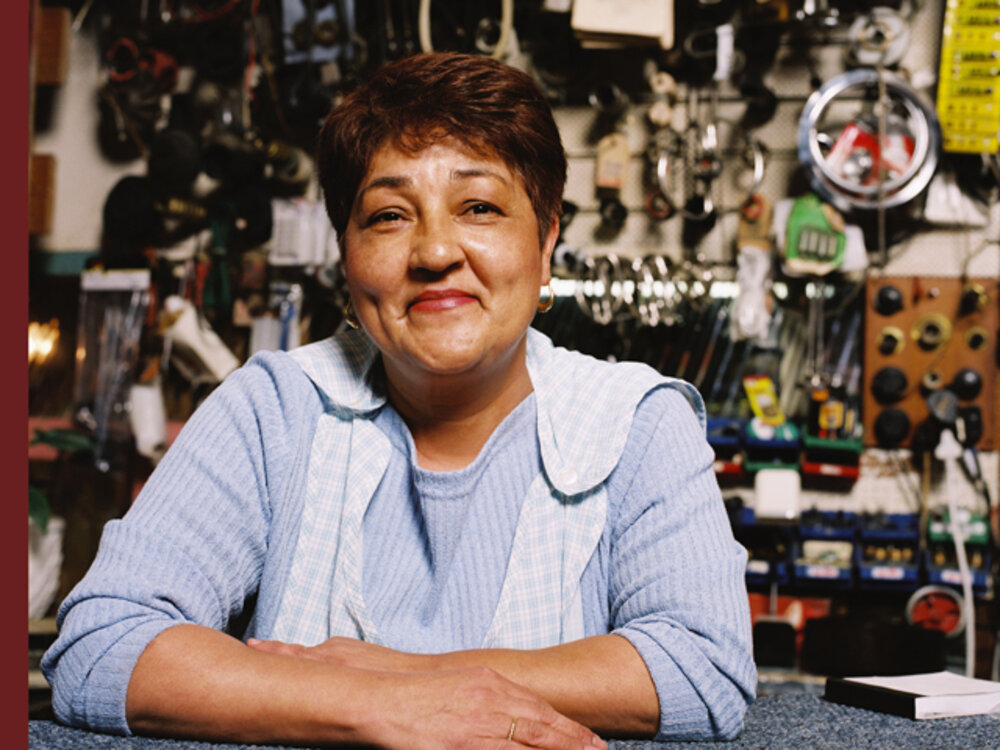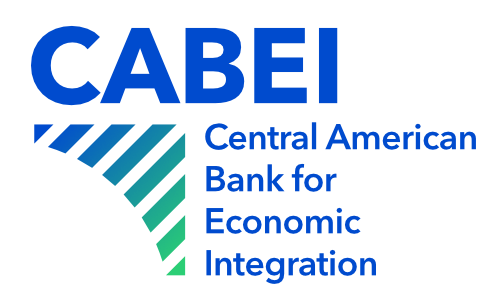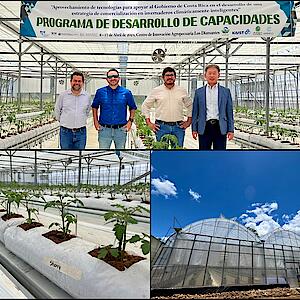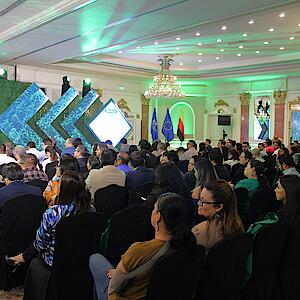Towards the economic autonomy of women in the SICA countries

Tegucigalpa 21 de marzo del 2017.-The member countries of the Central American Integration System (SICA) include Belize, Costa Rica, El Salvador, Guatemala, Honduras, Nicaragua, Panama and the Dominican Republic. Currently, these countries have shown an increase in productive population, which facilitates growth and development opportunities for their inhabitants.
According to information compiled by the Central American Observatory for Social Development (OCADES) of the Secretariat for Central American Social Integration (SISCA), the promotion of gender equality and equity in the SICA Region presents different challenges. In general terms, women have less economic autonomy, pursuant to the Economic Commission for Latin America and the Caribbean (ECLAC, 2016).
In countries with available information, the percentage of the population without their own income was higher in women than in men during the 2009-2014 period. In large part, this was due to the exclusion of women from the labor market and their dedication to unpaid domestic work. Between 1990 and 2014, the female labor force in the SICA Region more than doubled (World Bank, 2017). In 2014, it amounted to 9.46 million.
However, this expansion was not sufficient to close the gender-economic gap because the exclusion towards women in the labor market persists and many of them still carry out unpaid domestic work. By 2014, there were just over 6 economically active women for every 10 men (World Bank, 2017). According to data compiled by OCADES during the 2009-2014 period, at least 26.2% of women aged 15 years or more were exclusively dedicated to household tasks (ECLAC, 2015).
At the same time, the labor insertion of women does not guarantee their full economic autonomy. According to recent information, women have higher rates of unemployment and underemployment than men in most countries of the region (IDB, 2017).
In addition, they report lower labor income than men (ECLAC, 2016). This disadvantageous labor access prevails even when the female labor force has a higher education level than the male labor force. On average during the 2009-2014 period, women aged 15 and over had at least 7.6 years of education in every SICA member country, while men averaged 5.2 years (ECLAC, 2016).
Regional Policies
Faced with these challenges in a meeting held in Buenaventura, Panama, on December 14, 2013, the SICA Heads of State and Government approved the Regional Policy on Gender Equality and Equity (PRIEG/SICA), which seeks to contribute to the development of conditions for gender equality, guaranteeing all people their rights, access to and development of their capacities and opportunities, regardless of gender.
One of PRIEG/SICA’s pillars is economic autonomy, which fosters women’s ability of deciding on economic resources, access to paid employment, income generation and equitable time use.
With regard to the economic field, SICA institutions lead initiatives in favor of women.
One of these noteworthy SICA institutions is the Council of Ministers of Finance of Central America, Panama and the Dominican Republic (COSEFIN), which involves the design, approval and implementation of a gender approach in the budgets of the SICA countries.
Furthermore, the Regional Program for the Economic Autonomy of Women (PRAEM), which is an initiative that seeks to remove the institutional, material and cultural obstacles that prevent women from enjoying their full economic rights on equal terms, is in line with the PRIEG/SICA’s axis 2 "Women’s Economic Autonomy" and is led by CABEI, SIECA and the Regional Center for MSME Promotion (CENPROMYPE).
In June 2016, PREAM publicly launched the Regional Financing Program for Women Entrepreneurs (FEM), and as of December 31, US$3,656,895.41 has been disbursed, generating 947 new jobs for women in Guatemala, El Salvador and Costa Rica. The credits seek to promote women empowerment and economic autonomy. FEM, which is executed by CABEI, channels funds through the Bank’s network of financial intermediaries and has an initial US$10 million in available funds for women in the Central American region.
In addition, the CENPROMYPE has implemented the Non-reimbursable Fund for Inclusive Enterprise Financing, which includes access to women-led initiatives; approximately 1,000 entrepreneurship projects have applied for the Fund, of which 465 are women-owned. The Fund has also promoted the creation of specialized business services for the region’s women entrepreneurs; these are located in the regional MSME attention centers.
The CAC has supported increased productivity, diversification and quality of food production to contribute to food security, efficient water use, diversification of the supply of healthy and nutritious food, collection centers, improved seeds, efficient fertilizer use, dairy and fish farming, among others, within the framework of the territorial projects carried out through the Central American Strategy for Territorial Rural Development (ECADERT)
To date, 40 territorial projects have been executed in the eight SICA countries, of which four have been directed exclusively to women producers, while the rest have had a strong participation of women who have been benefited, thereby enriching the countries’ rural economies.
Other noteworthy events include 6 national forums held on Territorial Rural Development and Gender Equality and Equity (Costa Rica, Honduras, Guatemala, Panama, El Salvador), in which 461 people participated, and the implementation of a project denominated, "Building the rural multicultural territorial development of Central American women," which resulted in 115 rural women of different ethnic groups in Guatemala, Honduras, El Salvador and Nicaragua empowering themselves with their organizational rights and capacities. Out of these, 64 learned popular ways of communicating their ideas and proposals in order to solve the problems affecting them in their territories, among others.
In the field of fisheries and aquaculture, the role of women in the different activities involving processing, marketing, and business management is on the rise, leading to increased economic autonomy. Among these actions are the Aquaculture Integration Alliances; 29% of the 13 projects are led by or have a significant participation of women.
Under the framework of the Central American Fisheries Support Plan (PAPCA), support was provided to the organization of artisanal fishermen on organizational and gender issues by holding the "Isthmus’s First Meeting of Artisanal Fisherwomen" with the participation of 85 female delegates from the federations and administrative offices of the fishery industry; this resulted in a Proposal for a Central American Isthmus Artisanal Fisherwomen’s Action Plan.
In addition, 127 people were trained on issues related to equity and gender in artisanal fisheries through the Vocational Training and Sustainable Productive Development Project for Small Scale Fisheries in Central America (PROFOPAC),
With respect to the area of business entrepreneurship, 12 women members of the Cuerderos Palito Isla Chira Association (ASOPECUPACHI) benefited in Costa Rica, with support in infrastructure and technical assistance for the development of oyster farming, which has become an important income-generating activity for their families.
The main challenge is to fulfill PRIEG’s main objective that, "By 2025, the SICA member states have incorporated the necessary measures to guarantee the full development and advancement of women in Central America and the Dominican Republic, under conditions of equality and equity in the political, social, economic, cultural, environmental and institutional fields, both at regional and national levels."
In this context, PRIEG/SICA's axis of Economic Autonomy is aimed at facilitating the removal of institutional, material and cultural obstacles that prevent Central American and Dominican women from enjoying their economic rights on equal terms.










![[Translate to English:] [Translate to English:]](/fileadmin/_processed_/e/3/csm_WhatsApp_Image_2024-04-18_at_2.12.23_PM__2__590ef43ade.jpeg)
